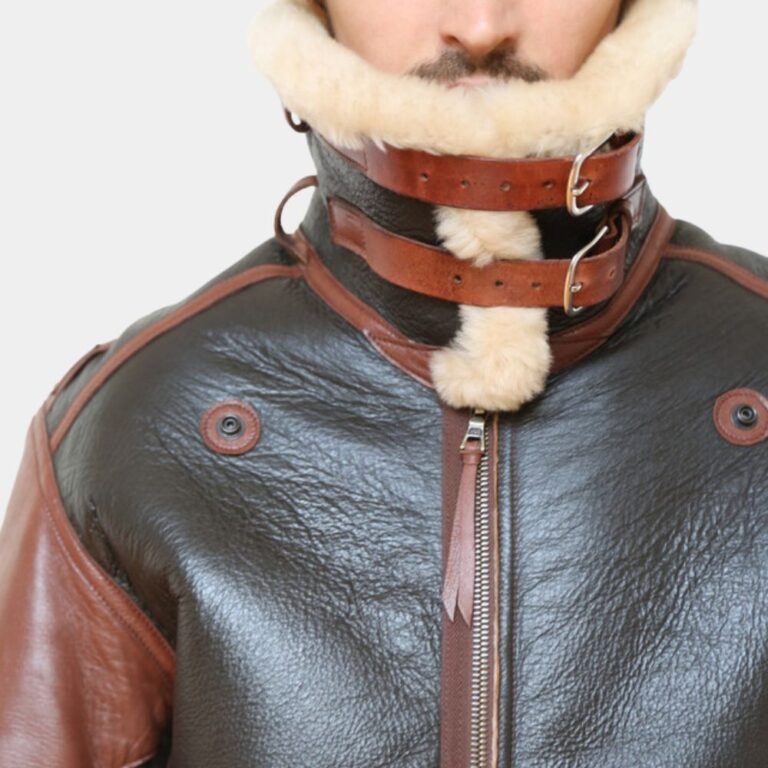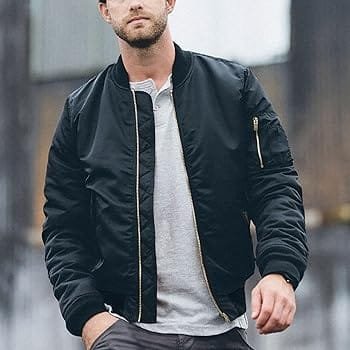What is a Sheepskin Leather Jacket?
Introduction to Sheepskin Leather Jackets
Sheepskin leather jackets are a distinctive type of outerwear crafted from the hide of sheep, which undergoes a specific tanning process to retain the wool on one side. This unique material, commonly referred to as shearling, is renowned for its softness, resilience, and exceptional natural insulation properties. The origin of sheepskin leather can be traced back to ancient civilizations where it was utilized for its warmth and durability, making it a practical choice for harsh climates.
The processing of sheepskin leather involves a meticulous tanning procedure that not only preserves the wool but also enhances the leather’s inherent qualities. This results in a material that is both plush and sturdy, offering a luxurious feel along with long-lasting wearability. The natural insulation provided by the wool makes sheepskin leather jackets particularly effective in retaining body heat, providing comfort and protection against cold weather.
Historically, sheepskin leather jackets have evolved significantly, from their utilitarian use by early aviators and military personnel to becoming a staple in contemporary fashion. During World War II, sheepskin bomber jackets, also known as B-3 jackets, were designed to keep pilots warm at high altitudes. These jackets featured a rugged exterior and a plush shearling lining, marrying functionality with a timeless aesthetic.
Aviator jackets, another popular style, also have roots in military history but have been adapted for civilian wear, often characterized by their wide collars and heavy-duty zippers. Shearling coats, known for their longer length and luxurious appeal, are a testament to the versatility of sheepskin leather, ranging from casual to high-fashion designs.
In contemporary fashion, sheepskin leather jackets are celebrated for their unique blend of elegance and practicality. Whether in the form of a classic bomber, an aviator jacket, or an opulent shearling coat, these jackets continue to be a symbol of enduring style and superior craftsmanship.
Benefits and Care of Sheepskin Leather Jackets
Sheepskin leather jackets offer numerous advantages that make them a popular choice for both fashion and practicality. One of the most notable benefits is their exceptional warmth. The natural wool lining provides insulation, making them ideal for cold weather. Unlike synthetic materials, sheepskin leather allows the skin to breathe, enhancing comfort by regulating body temperature. This makes them suitable for a range of weather conditions, from chilly autumn days to harsh winter climates.
In addition to their functional benefits, sheepskin leather jackets are revered for their timeless fashion appeal. They exude a classic style that transcends seasonal trends, ensuring that such an investment remains relevant for years. Their versatility allows them to be worn on various occasions, whether it’s a casual outing or a more formal event. The unique texture and appearance of sheepskin leather add a touch of luxury to any outfit.
Proper care and maintenance are crucial to prolonging the life of a sheepskin leather jacket. Regular cleaning is necessary to prevent dirt and oils from damaging the leather. It is recommended to use a specialized leather cleaner and a soft cloth to gently wipe the surface. Avoid using harsh chemicals or soaking the jacket in water, as this can lead to irreparable damage.
Storing the jacket correctly is equally important. It should be kept in a cool, dry place away from direct sunlight to prevent fading and cracking. Using a padded hanger helps maintain its shape, while a breathable garment bag protects it from dust. Handling the jacket with clean hands reduces the risk of transferring oils and dirt to the leather.
While sheepskin leather jackets offer numerous benefits, there are some considerations to keep in mind. They can be more expensive than other types of jackets due to the quality of materials and craftsmanship involved. Additionally, ethical concerns regarding sheepskin leather production may influence purchasing decisions. It is important to consider these factors and opt for brands that prioritize ethical sourcing and sustainable practices.






